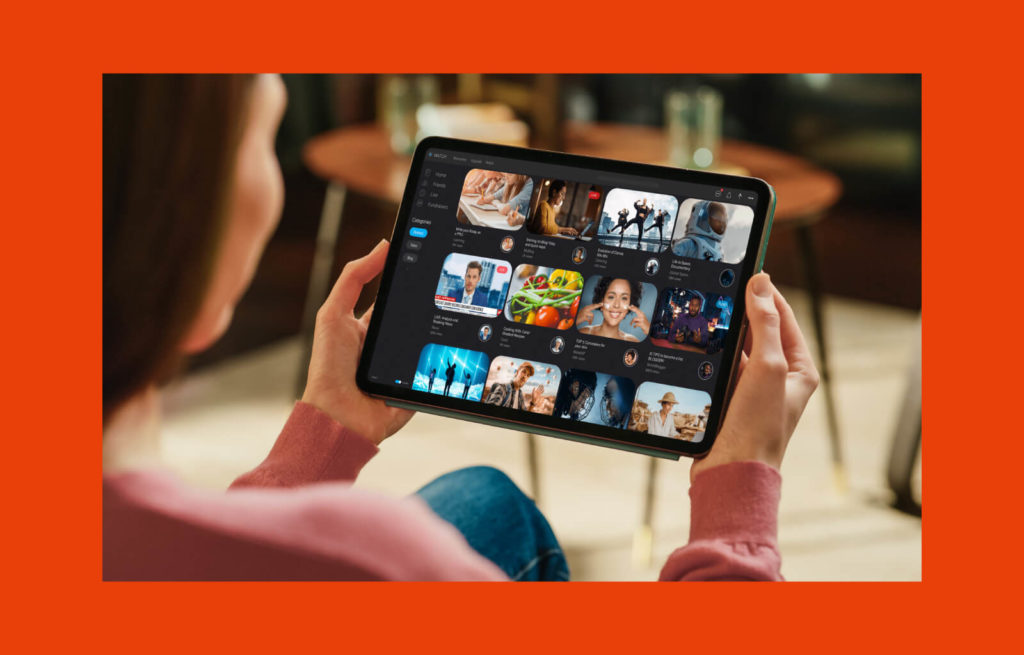Everything you need to know about VOD/OTT advertising
Video on Demand (VOD) has been widely adopted by media companies and consumers around the globe, becoming the preferred method for watching content. This technology allows users to view series and movies on various devices without needing a cable or satellite subscription. The rise of streaming media has fundamentally changed content consumption patterns and has also revolutionised the way advertisers connect with distinct audiences. In this article, we will explore the key concepts of VOD/OTT advertising and highlight its primary benefits.
Understanding the difference between OTT, VOD, and CTV
Viewers are increasingly opting for alternative viewing options beyond traditional TV. In response, advertisers are seeking new methods to reach their audiences via devices like Chromecast, Amazon Fire TV Stick, Roku, and Apple TV.
This shift has given rise to OTT (Over-the-Top) advertising, which offers innovative opportunities for advertisers. Before diving deeper, let’s ensure you understand the key terms involved.
The acronyms CTV, VOD, and OTT are often used interchangeably, even in industry articles, but they are not the same. Here is a breakdown of each term:
Connected TV (CTV)
Connected TV (CTV) refers to a broad ecosystem of devices that enable people to watch streaming video content. Examples include:
• Smart TVs: These have internet-enabled operating systems, allowing viewers to stream video content directly.
• Streaming devices: Devices such as Chromecast, Roku, Firestick, and Apple TV that connect to a TV.
• Game consoles: PlayStation, Xbox, Nintendo, and other consoles connected to the TV.
While smartphones and computers can also stream VOD content, they are typically not considered part of the CTV landscape. For simplicity, it is best to use CTV to refer to smart televisions and streaming devices that connect to a TV set.
Over-the-Top (OTT)
Over-the-top (OTT) is a broad term for delivering content and television via the Internet without using traditional TV antennas or cables. CTV is specific to viewing content on a TV screen, while OTT encompasses accessing content on various devices such as laptops, smartphones, tablets, and smart TVs. Use the term OTT when the device used for watching content is irrelevant.
Video on Demand (VOD)
VOD refers to video content that can be watched on demand, contrasting with traditional broadcast schedules. OTT describes the delivery model of this content over the internet. Popular VOD service providers include Netflix, Amazon Prime, Disney+, Hulu, and MAX.
To sum up, most OTT content is now accessed through CTV. As a result:
• OTT refers to the delivery method of video content over the internet.
• CTV refers to the devices (such as smart TVs and streaming devices) used to watch this content.
• VOD refers to the consumption model, where you watch content on demand, regardless of its broadcast schedule.
Why OTT advertising is essential
Both CTV and OTT are continually evolving. 88% of US households own at least one Internet-connected TV device and almost half (49%) of US adults watch these connected TVs daily.
For many years, traditional TV advertising was the gold standard for reaching mass audiences. However, it targets all segments of the potential audience indiscriminately, making it less effective for specific advertising purposes. As viewers increasingly adopt OTT services, marketers are discovering new opportunities to target and engage key audiences more effectively. Here are several reasons why CTV and OTT advertising are gaining popularity.
Expanding the viewer base
Traditional TV subscriptions are on the decline. OTT captures the growing audience who have opted out of cable or satellite entirely. In fact, over 90% of American adults access streaming video platforms, while only 40% have cable or satellite service. The widespread adoption of OTT services is driven by the demand for greater flexibility, a wider range of content, and the convenience of on-demand viewing. Viewers are no longer tied to rigid broadcast schedules or limited channel selections. Instead, they can choose what to watch, when to watch it, and on which device.
Enhanced targeting options
Marketers can segment the target audience to improve ad performance significantly. Various targeting options are available through connected TV and OTT, including geolocation, search history, viewing habits, and installed apps. This means the same audience can be targeted and retargeted across different screens and channels. For example, an audience can be initially reached on a laptop screen and then retargeted on OTT devices. This precise targeting allows advertisers to display ads to users who are more likely to be interested, achieving a higher return on investment (ROI).
Engaged audiences
The shift from traditional TV to OTT platforms has significantly increased audience engagement. Streaming services offer a level of personalisation and interactivity that traditional TV cannot match. This heightened engagement leads to better advertising outcomes. The ability to target specific audience segments ensures that marketing messages resonate more deeply, leading to higher engagement rates and improved brand recall.
Moreover, the interactive capabilities of OTT platforms enable dynamic ad formats, such as clickable CTAs, polls, and quizzes. These interactive elements capture viewer attention and provide valuable insights into consumer preferences.
Interactive ad formats
OTT and connected TV advertising offer marketers a diverse range of creative ad formats. Unlike cable TV advertising, which is limited to video ads, connected TV advertising can include video, banners, interactive ads, animated and static ads, and more.
Types of ads used in connected TV advertising include:
• In-stream video ads: Short, unskippable ads displayed before, during, or after the main content, commonly used by platforms like YouTube.
• Interactive pre-roll ads: Similar to in-stream video ads but with a call-to-action and a button leading to the advertiser’s landing page.
• Home Screen placement ads: Static images or short videos displayed on the home screen, often clickable.
This variety allows advertisers to experiment with different formats and CTAs to determine which are most effective in terms of engagement and performance.
Cost efficiency
OTT advertising can be more cost-effective than traditional TV advertising. Instead of paying for a broad audience, advertisers only pay for the specific segments they want to reach. This targeted approach reduces wasted ad spending and increases the return on investment (ROI). Additionally, tracking and measuring ad performance in real-time allows marketers to adjust their strategies quickly, optimising their budgets.
Measurable results
One of the most compelling reasons for the shift to CTV and OTT advertising is the ability to measure results accurately. OTT platforms provide detailed analytics on viewer engagement, ad completion rates, and other key performance indicators (KPIs). This data transparency helps marketers understand the impact of their campaigns and make data-driven decisions to improve future ad strategies.
Adaptation to viewing habits
OTT and CTV advertising align with the changing viewing habits of consumers. People watch content on various devices, including smart TVs, tablets, and smartphones. This multi-device approach allows advertisers to reach audiences wherever they are, whether they are watching at home or on the go. This adaptability increases the touchpoints for engaging with potential customers.
OTT advertising best practices
To maximise the effectiveness of OTT advertising, marketers should follow several best practices that cater to the unique nature of the platform and its audience.
- Utilise the rich data available from OTT platforms to create highly targeted ad campaigns. Segment your audience based on demographics, viewing habits, interests, and behaviour. This precision targeting ensures your ads are relevant to the viewers, increasing the likelihood of engagement and conversion.
- The content of your ads should be engaging and relevant to the target audience. Use high-quality visuals, clear messaging, and compelling calls-to-action. Consider creating multiple versions of your ad tailored to different audience segments to ensure it resonates with each group.
- Different OTT platforms may have varying optimal ad lengths and formats. Shorter ads (15-30 seconds) are often more effective as they maintain viewer attention. Experiment with different formats, such as pre-roll, mid-roll, and interactive ads, to find what works best for your audience and campaign objectives.
- Implement A/B testing to determine which versions of your ads perform best. Test different creatives, messages, and calls-to-actions to see what resonates most with your audience. Use the data and insights gained to continuously optimise your ads for better performance.
- Leverage the ability to target viewers across multiple devices. Coordinate your OTT ads with campaigns on other digital platforms, such as social media, websites, and mobile apps, to create a cohesive and consistent brand message. Cross-device targeting ensures that your audience receives a unified experience, regardless of the device they are using.
The last words
In summary, OTT and CTV ads represent the future of targeted and effective marketing in the digital age. As traditional TV continues to decline and more viewers move to on-demand streaming platforms, advertisers must adapt to these changes to remain relevant and reach their desired audiences. The unique advantages of OTT advertising, including precise targeting, interactive ad formats, cost effectiveness, and measurable results, make it an essential tool for today’s marketers.
Don’t miss out on the opportunities that OTT and CTV advertising offer. Start exploring how you can integrate these advanced advertising strategies into your marketing plans today to connect with your audience in more meaningful and impactful ways.
Ready to transform your advertising approach with OTT and CTV? Contact us today to learn more about how our solutions can help you reach your goals.
About the author
Get in touch





